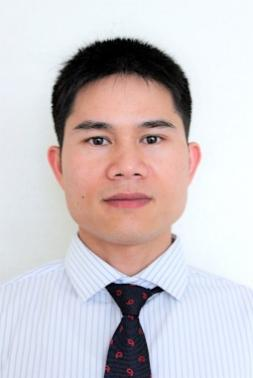Submission Deadline: 30 June 2026 View: 1109 Submit to Special Issue
Prof. Dr. Van-Tu Nguyen
Email: vantunguyen@pusan.ac.kr
Affiliation: School of Mechanical Engineering, Pusan National University, Busan, 46241, South Korea
Research Interests: Computational Fluid Dynamics: Numerical methods, Numerical algorithms, Numerical programming; Fluid Dynamics: Multiphase flows, Shock Capturing, Free surface flows, Water entry/ Water exit, Cavitation, Bubble dynamics, Cavitation erosion, Droplet, Heat and mass transfer, Gas dynamics and Industrial gas flows, Supercavitation, High-speed subsonic-supersonic flows; Mechanical Systems: Energy System, Mechanical System Design, Control Automated System, Nuclear Energy System

Prof. Dr. Qingyun Zeng
Email: qyzeng@hrbeu.edu.cn
Affiliation: College of Shipbuilding Engineering, Harbin Engineering University, Harbin, 150006, China
Research Interests: Cavitation bubble dynamics, Computational fluid dynamics, Droplets

Dr. Phuong Nguyen
Email: nguyen@ibpc.fr
Affiliation: The National Centre for Scientific Research (CNRS), Paris, 75005, France
Research Interests: Development and application of molecular dynamics and particle dynamics simulation techniques to study bubble cavitation-induced biological barrier disruption, with the aim of enhancing drug delivery and facilitating blood-brain barrier opening

Welcome to the Special Issue on "Modeling and Applications of Bubbles and Droplets in Engineering and Sciences". This fascinating field spans a wide array of disciplines, including environmental science, mechanical and ocean engineering, biomedical engineering, alcoholic beverage fermentation, soil improvement, bacterial sterilization, and more. The study of bubbles and droplets in fluids is central to understanding many natural and industrial processes. Phenomena such as cavitation, bubble collapse, and bubble oscillation further illustrate the dual nature of bubbles in fluids. On the one hand, these phenomena can produce microjets that cause corrosion and severe vibrations. On the other hand, bubble oscillations generate microjets, temperature spikes, and shock waves, enabling applications in areas such as drug delivery, kidney stone disintegration, eye surgery, medical treatments, surface cleaning, and more. Droplets, whether liquid or solid, play critical roles in diverse applications, such as inkjet printing, spray cooling, fuel injection, aerosol medicine delivery, and environmental pollutant transport. Their behavior—encompassing formation, breakup, coalescence, and evaporation—poses both scientific challenges and engineering opportunities.
This issue aims to highlight the latest advancements and insights into the dynamic and interdisciplinary study of bubbles and droplets in fluids, showcasing their fundamental mechanisms and practical applications. Recent advancements in the study of bubble and droplet dynamics have introduced new tools for analyzing the fundamental chemical, mechanical, and physical aspects of these phenomena and applying them in a myriad of fields. This special topic seeks to serve as a collaborative platform, inviting researchers and scientists to present and discuss their original contributions through letters, research articles, full-length/mini-reviews, and more. Our ultimate objective is to propel the field forward by offering novel theoretical insights, cutting-edge numerical modeling, innovative simulations, and experimental revelations.
We encourage you to participate in this Special Issue and contribute to the ongoing exploration of these phenomena and their far-reaching applications. Join us in shaping the future of this dynamic and multidisciplinary field.
Key Areas of Interest (Keywords):
• Fundamental areas:
- Nano to millimeter bubbles
- Bubble and droplet dynamics
- Oscillation of bubble and/or droplet
- Cavitation
- Cavitation Bubble
- Acoustic Cavitation
- Boiling and Condensation
- Nucleating Bubbles
- Cavitation Erosion
- Shock Wave
- Capillary Flow; Surfactant; Heat Convection
- Analytical methods
- Molecular simulations
- Numerical modeling and CFD simulations
• Application areas:
- Marine Propulsion
- Environment and Water Treatment
- Biomedicine: Kidney Stone Fragmentation/ Eye Surgery/ Cancer Treatment/ Drug Delivery/ Wound and Dental Cleaning/ Tissue Engineering/ Ultrasound Imaging and Diagnosis/ Pharmaceutical Manufacturing…
- Industry and Mechanics: Water Jet Cutting/ Industrial Cleaning/ Fuel Injection/ Hydraulic Erosion Control/ Hydroelectric Power Generation/ Food Processing/ Inkjet Printing
- Chemical Synthesis



 Submit a Paper
Submit a Paper Propose a Special lssue
Propose a Special lssue